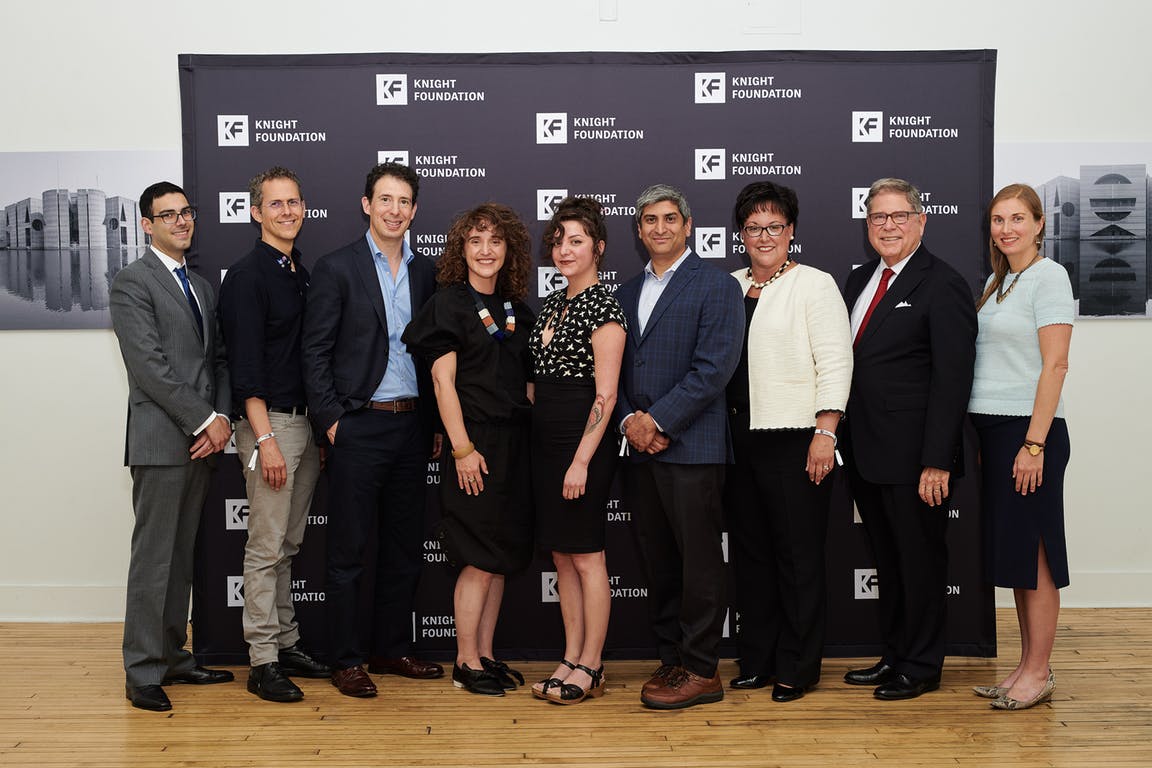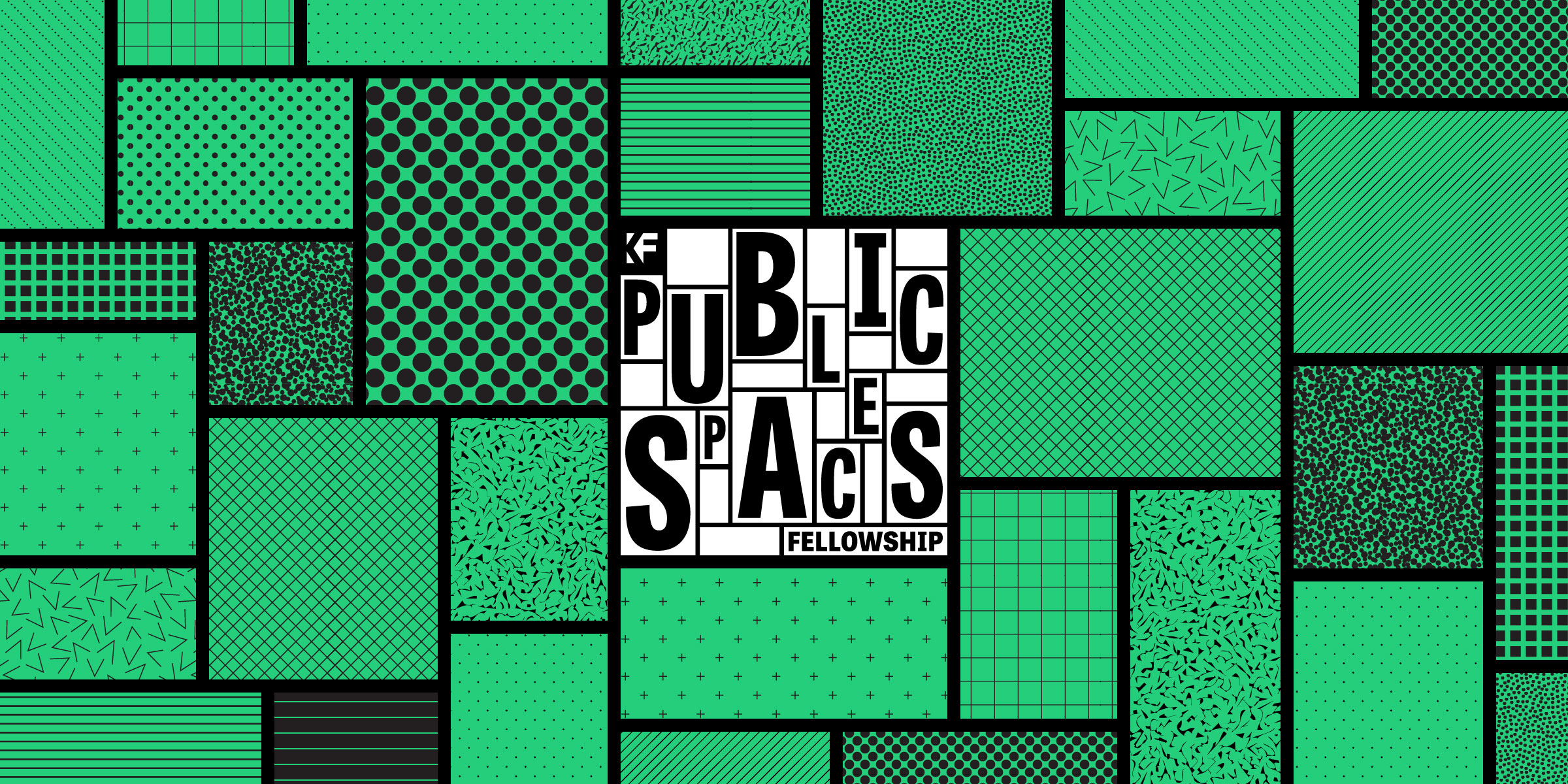Convene a group of urbanists, technologists and policy makers to understand how emerging technology, new mobility, and e-commerce are impacting public spaces and how communities can address these issues to promote community goals.
Program Area: Community Impact
To convene startup CEOs and venture investors through dinners and socials.
To support the participation of city transportation officials in Knight communities at the NACTO Designing Cities annual conference.
To support a Miami Pavilion at TechCrunch Disrupt San Francisco.
To support a creative campaign that will highlight 30 female entrepreneurs and venture investors from Miami.
To support the engagement of LEH Consulting Group LLC to develop a capitalization plan which will further growth in NewTown Macon’s business and real estate lending programs.
To send a delegation of startup community leaders to Venture Atlanta, one of the Southeast’s most recognizable venture and innovation conferences.
8 80 Cities will bring 15 city leaders from San Jose on an immersive, five-day study group to Melbourne, Australia. Additional cost was created as Knight requested in-depth briefing on Melbourne Laneways and 20 Minute City initiatives.

Photo: Lilly WeinbergKnight Foundation President Alberto Ibargüen addresses community leaders after accepting the Beacon Council Jay Malina Leadership Award on June 26, 2019. The text of his remarks is below.
When Susana and I arrived in Miami in 1995, one of the first people I met was this skinny, black-haired guy with glasses and a smile that was all teeth. He wanted me to feel welcome, to get me settled, to get me engaged. “Hello, my friend,” he’d say. “How are you, my friend?” Always, “my friend.”
Miami had previously gone through riots, Mariel, and Elian González. It was trying to absorb a wave of new immigrants from Latin America, in the wake of many thousands who moved north after Hurricane Andrew. The city was going west to the Everglades for locals, and up from the ground and against the ocean for New Yorkers, Latin Americans, and Europeans.
We were poised to split apart or to soar — and we soared because some of the people here tonight saw opportunity where others only mayhem. We had people with vision, courage, skill and tenacity. Local talent developed a vibrant downtown, significantly raised the level of our universities and medical centers, and made Miami a cultural destination, a hub of tech entrepreneurship and a beacon of freedom in the Hemisphere.
When I see this town come together, I remember that guy with the glasses and the ever-ready smile, who thought everything was possible and for whom everyone was “my friend.” That guy was Jay Malina, a hard-numbers, business guy, determined and tenacious in his drive to make our city great.
I’m honored to receive the Jay Malina Leadership Award in the presence of so many of this community’s leaders. I accept it with respect for all of your contributions, and with pride and appreciation for my Knight Foundation, Miami Herald and El Nuevo Herald colleagues, who deserve their fair share of credit for the development of journalism, arts and tech entrepreneurship in Miami.
I’m thrilled that Janá Sigars-Malina, is here. And most of all, I’m happy to receive this award because it gives me a chance, in front of Jay and Janá’s daughters, Brezlan and Makenna, to remind myself of some lessons from their father.
My friend Jay saw the possibility and power of one community, sharing one goal. But to have one community meant diversity and inclusion, and that meant some people would have to share power. And to share one goal meant giving up self-interest. Those were problems that Jay poked and prodded. He was both a part of and a pain in the side of the establishment. He played hardball and he sometimes lost. Some of you may remember he was pushed out of the Chamber of Commerce. But he was tenacious and One Community/One Goal moved to the Beacon Council, where it’s been sustained ever since.
If he were here, Jay would be thrilled to know the winners of tonight’s Beacon Awards. And he’d be impatient that we have so much work still to do as a community.
If he were here, Jay might share a vision of Miami as a hub of entrepreneurship and high growth enterprise that turns our geographic location at the center of the Americas — and our diversity into a defining advantage. He might also uncomfortably remind us that no civilization ever succeeded when it accepted transparently vast wealth inequality. He might point out, too, that we can’t succeed in a democracy if we don’t properly evolve our public schools, and that we’re Ground Zero for climate change.
And he might say, with a grin, that these are not threats or warnings, but calls to leadership.
If you think these things are too big for us to tackle, Jay might point to our totally transformed skyline, our ability to hold the line on development into the Everglades, the evolution of Miami International Airport or to the amazing transformation of arts and culture in our town. He might also point out that 20 years ago, most of us wouldn’t have known what “early childhood readiness” was, but today, our Children’s Movement is a national example. And he’d take pride in the way this business community came together on the Amazon bid and say, “Hey, focus on the fact that we proved we can come together as one community with one goal. So, what’s our next objective?”
He’d be exhilarated by the fact that we’re in the middle of a major, generational change of leadership in key businesses, in government and in civic institutions. That will be a game changer.
Not long ago, in this county where most of us were born someplace else, we allowed ourselves to be defined by our differences and by our allegiance to where we came from. Today, we celebrate our diversity and our commitment to *this* community.
I can feel the change and it fills me with hope.
Thank you for this honor. And thank you for all you do to build our one community.
To produce the Venture Florida Summit, a two-day gathering of premier venture capital investors, limited partners and startup CEOs.
June 19, 2019 — To advance the creation of public spaces that transform communities, seven outstanding individuals from across the United States have been named Knight Public Spaces Fellows, an initiative of the John S. and James L. Knight Foundation. Launched this year, the project recognizes leaders, experts, and practitioners who have created or influenced great public spaces that strengthen community engagement and connection. Fellows will each receive $150,000 in recognition of their contributions and to advance their work.
Fellows include talented leaders with exemplary track records of crafting public spaces — parks, plazas, trails, community spaces and streets — that create opportunities for civic engagement. The fellowship aligns with Knight’s support of public spaces as a means to connect communities, drawing people out of their homes and encouraging them to meet, play and discuss important issues, while finding common ground.
Fellows will receive $150,000 in flexible funding to provide them with the space and freedom to unleash their creativity. They will also have access to opportunities to work with and learn from each other, and to elevate their work to a wider audience. The program will encourage the sharing of lessons across cities, and in particular the communities where Knight invests. Participants are expected to build on their ongoing work, while developing new efforts for the field.
“These rare people see something different when they look at streets, parks and sidewalks —they see a vision of how our communities could look, feel and be different,” said Sam Gill, Knight Foundation vice president for communities and impact. “We hope this recognition accelerates their visionary work and invites others to challenge the way we think about and use public space.”
Fellows were identified through a national call for nominations that launched in February, which generated more than 2,000 candidates. They were selected by Knight staff in collaboration with experts and leaders in the field. The Fellows were announced at the inaugural Knight Public Spaces Forum this afternoon in Philadelphia.
The fellows include:
Anuj Gupta (Philadelphia): General manager of Reading Terminal Market in Philadelphia, one of the largest and oldest public markets, Gupta has brought new and innovative distribution and engagement models to the market. In particular, he has spearheaded engagement initiatives focused on connecting cultures and bringing people of different backgrounds together around food.
Chelina Odbert (Los Angeles) (@kounkuey): Odbert is co-founder and executive director of Kounkuey Design Initiative, a nonprofit design firm (with offices in Los Angeles, the Coachella Valley, Nairobi and Stockholm) that prioritizes community participation in public space development — designing side-by-side with residents. Odbert emphasizes that public space design must integrate not only environmental, but also social and economic strategies to address community inequities. Her recent work in Coachella Valley and Los Angeles showcases this approach.
Eric Klinenberg (New York) (@EricKlinenberg): The Helen Gould Shepard Professor of Social Science at NYU and a practitioner working on urban public spaces, Klinenberg most recently served as research director of Rebuild by Design. The federal competition focused on generating innovative designs for 21st Century infrastructure in the region affected by Superstorm Sandy. In 2018, Klinenberg published “Palaces for the People”, a book about the essential role of social infrastructure (including libraries, playgrounds, and parks) in revitalizing democratic culture and civic life.
Erin Salazar (San Jose, California) (@localcolorsj): Founder and Executive Director of Exhibition District, Salazar heads a woman-owned and operated arts nonprofit building economic opportunities for creatives at the intersection of art and community development in San Jose. Salazar is redefining what “public space” is and what it could be in a city full of large corporations, while working to maintain the community’s cultural authenticity.
Kathryn Ott Lovell (Philadelphia): Commissioner of Philadelphia Parks and Recreation, Lovell oversees one of the largest park systems in the country, bringing a strong focus on innovation to the government sector. Her emphasis on “citizen centric” service, provides exceptional parks and recreation opportunities to residents and prioritizes community engagement.
Robert Hammond (New York) (@robertrhammond): Co-Founder and Executive Director of the High Line, Robert had the vision and foresight to lead the effort to build an elevated park on an abandoned railway line in New York City 20 years ago. In 2017, he formed the High Line Network, which focuses on the equitable development of underused city infrastructure to develop new urban landscapes.
Walter Hood (Oakland, California) (@HDHoodDesign): Hood is creative director and founder of Hood Design, a firm that practices at the intersection of art, design, landscape, research and urbanism across the country. He is also a professor at the University of California, Berkeley in landscape architecture and urban design.Hood Design Studio designs public spaces for institutions such as Cooper Hewitt Museum, Broad Museum and Solar Strand at University of Buffalo, as well as neighborhood community spaces such as Splash Pad Park in Oakland, California and Baisley Park in New York City (now Curtis “50 Cent” Jackson Community Garden).
Knight Foundation supports informed and engaged communities by investing in cities to attract and nurture talent, promote economic opportunity and foster civic engagement. We believe that public spaces are a key ingredient in connecting people to each other and the places where they live. The foundation has made several investments in this area including the national Reimagining the Civic Commons initiative, that seeks to bring people together by revitalizing and connecting public spaces.

About the John S. and James L. Knight Foundation
Knight Foundation is a national foundation with strong local roots. We invest in journalism, in the arts, and in the success of cities where brothers John S. and James L. Knight once published newspapers. Our goal is to foster informed and engaged communities, which we believe are essential for a healthy democracy. For more, visit kf.org.
Contact
Lauren Dickinson, Communications Officer, John S. and James L. Knight Foundation, 305-908-2694, [email protected]
Image (top): Courtesy of High Line
-
Community Impact / Press Release
-
Community Impact / Press Release

